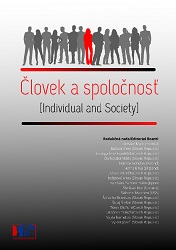Cultural Population Structure of the Czech Borderland 70 Years after Resettlement a Case Study: Tachov
Cultural Population Structure of the Czech Borderland 70 Years after Resettlement a Case Study: Tachov
Author(s): Antonín Vaishar, Helena NoskováSubject(s): Social history, Culture and social structure , Social differentiation, WW II and following years (1940 - 1949), Migration Studies, Sociology of Politics, Identity of Collectives
Published by: SAV - Slovenská akadémia vied - Spoločenskovedný ústav SAV
Keywords: Ethno-cultural structure; Ethnicity; Religiousness; Immigration; Czech borderland; Tachov;
Summary/Abstract: This study focuses on the ethno-cultural situation in one of the regions of the Czech borderland, from where almost the entire population was displaced after the Second World War. Ethnographic, historical and geographical methods were used for the research. The studied region consists of the small town of Tachov and 12 surrounding municipalities, which include a total of 38 settlements. Before the Second World War, the Tachov area was inhabited almost exclusively with people of German ethnicity. After the war, most of these people were displaced to Germany under the Potsdam Agreements. The region also lost most of its Jewish population as a result of the Holocaust and the emigration of those remaining abroad. The area was then inhabited by various groups of Slavic inhabitants from the Czechoslovak interior and other countries, including Czechs and Slovaks from the Czechoslovak interior who were looking for a chance for a new life across the border, and repatriates from the Czech or Slovak minorities in Volhynia, Hungary, Romania. The numbers were supplemented by Ruthenians, who took advantage of the possibility of resettlement after the transfer of Transcarpathian Ukraine to the Soviet Union, by Romanians and Bulgarians who came to the region as forestry experts, and individuals of other ethnic groups. The original population was far from being replaced, nor was resettlement considered as due to a lack of local economic resources and the border position. The loss of about a third of the population was concentrated in the town of Tachov along with the extinction of a number of original settlements due to the protection of the state border, the construction of the Lučina waterworks, or unsuccessful settlements. The result is an extremely low population density of 15 people per km2. The western part of the area includes a very sparsely populated landscape of the protected landscape area of the Upper Palatine Forest, while in the eastern part of the area, the Tachovská brázda Furrow is used for agriculture. There are practically no mineral resources. The economic base of the region lies in its manufacturing sector, especially in the processing of plastics in Tachov, which is reflected in its weaker educational structure. The sphere of services is undersized. Unemployment is not high, as Bavaria's proximity allows people to crossborder commuting. Although an ethnically almost homogeneous Slavic population emerged, the socio-cultural levels of the settlers were different. The following ethnocultural groups in particular were singled out and characterized in the territory: Czechs from Czechia, Slovaks from Slovakia, Czechs from formerly Ukrainian Volhynia, Czechs from formerly Polish Volhynia, Slovaks from Transylvania, Ruthenians from Romania, Ruthenians from Transcarpathian Ukraine, and Romanian and Bulgarian forest workers The Roma. German and Jewish ethnocultural groups disappeared, while a new Vietnamese ethno-cultural group formed. A military-police ethnocultural group was also set aside as a remnant of settlers who came to the area within the protection of its state borders. The events of the twentieth century completely changed the ethnic and cultural structure of the population of the Tachov region, when the original majority groups practically disappeared and a completely new structure was created. The study shows how the seemingly ethnically homogeneous structure of the population is in fact culturally differentiated. This had consequences for the entire post-war development of the region. The relationship of the locals to the landscape, to the settlements, and to the land was broken and it took some time for a new local community to form. Moreover, the borderland, in a way, served as a social experiment. The restoration of the middle class was prevented, which today is reflected in a lack of knowledge, and entrepreneurial drive to do business. There is an increased nostalgia for the social security of the socialist period. This is reflected in an increased proportion of votes being cast for non-systemic parties in elections. It turns out that the data on the ethnic structure of the population do not reflect the real cultural diversity of the region. It is necessary to use other statistical data that describe the cultural structure indirectly. Above all, however, it is necessary to carry out ethnographic research which can both characterize the current state and contribute to its explanation using the historical method.0 At present, the possibilities of migration are open. Czechia is becoming a destination for economic migrants from the East and potentially also seniors from the West, or refugees from the South. The experience of this study shows that the assimilation of people from different cultures is a long-term process. People of foreign cultures have a natural tendency to concentrate and separate from domestic culture in order to maintain their own culture. However, intercultural enrichment can only occur if they cooperate with the original culture and gradually integrate into it.
Journal: Človek a spoločnosť
- Issue Year: 23/2020
- Issue No: 3
- Page Range: 34-47
- Page Count: 14
- Language: English

